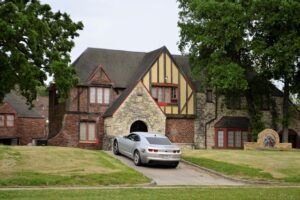Introduction
A smokeless fire pit is a modern innovation that allows people to enjoy the warmth and ambiance of a fire without the nuisance of smoke. Traditional fire pits produce smoke due to incomplete combustion of wood or other fuel sources. However, smokeless fire pits utilize advanced technology to minimize or eliminate smoke production, providing a cleaner and more enjoyable experience. In this article, we will explore how smokeless fire pits work and the benefits they offer.
Combustion Technology
One of the key elements that make smokeless fire pits possible is the advanced combustion technology they employ. These fire pits are designed to promote efficient and complete combustion of the fuel, resulting in minimal smoke production. They achieve this through various mechanisms, such as preheating the combustion air and creating a secondary combustion zone.
Preheating the combustion air: Smokeless fire pits often incorporate a system that preheats the incoming combustion air. By passing the air through channels or tubes heated by the fire, the air becomes warmer and less dense. This preheated air then mixes with the fuel, promoting more efficient combustion and reducing smoke.
Secondary combustion zone: Another important feature of smokeless fire pits is the creation of a secondary combustion zone. This zone is designed to burn any remaining smoke and volatile gases that are produced during the initial combustion. By providing a high-temperature environment and sufficient oxygen supply, the smoke and gases are effectively burned, resulting in a cleaner and smoke-free fire.
Airflow and Ventilation
Proper airflow and ventilation play a crucial role in the functioning of smokeless fire pits. These fire pits are designed to facilitate the entry of air and the exit of combustion byproducts, ensuring efficient combustion and minimal smoke production.
Air intake: Smokeless fire pits are equipped with air intakes that allow a controlled amount of oxygen to enter the fire chamber. These intakes can usually be adjusted to regulate the intensity of the fire. By controlling the airflow, the fire pit ensures that the combustion process is optimized, reducing smoke production.
Smoke extraction: To ensure the efficient removal of smoke and combustion byproducts, smokeless fire pits are equipped with mechanisms for smoke extraction. These mechanisms may include vents or chimneys that direct the smoke away from the fire pit and disperse it into the surrounding environment. By effectively removing the smoke, the fire pit minimizes any discomfort or health hazards associated with smoke inhalation.
Benefits of Smokeless Fire Pits
Smokeless fire pits offer several advantages over traditional fire pits:
Reduced smoke and odor: The primary benefit of smokeless fire pits is the significant reduction in smoke and associated odors. This allows for a more enjoyable and comfortable experience around the fire, without the need to constantly reposition oneself to avoid the smoke.
Environmental friendliness: Smokeless fire pits promote cleaner combustion, resulting in reduced air pollution. They produce fewer harmful emissions, such as particulate matter and carbon monoxide, making them more environmentally friendly compared to traditional fire pits.
Improved safety: With minimal smoke production, smokeless fire pits reduce the risk of accidental inhalation of harmful gases. They also minimize the chances of sparks or embers escaping from the fire pit, reducing the risk of fire hazards.
Conclusion
Smokeless fire pits utilize advanced combustion technology, efficient airflow, and ventilation mechanisms to minimize or eliminate smoke production. By preheating the combustion air and creating a secondary combustion zone, these fire pits promote complete combustion of the fuel, resulting in a cleaner and more enjoyable fire experience. The benefits of smokeless fire pits include reduced smoke and odor, environmental friendliness, and improved safety.
References
– firepit.com
– outdoorliving.com
– homedepot.com













